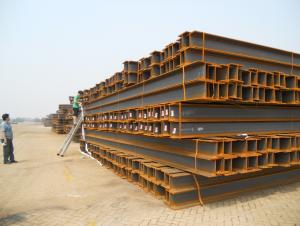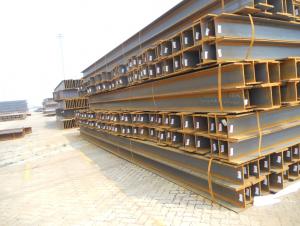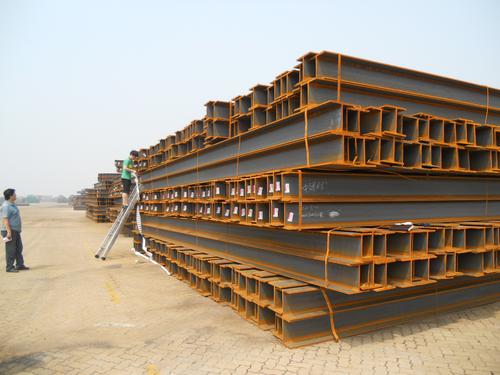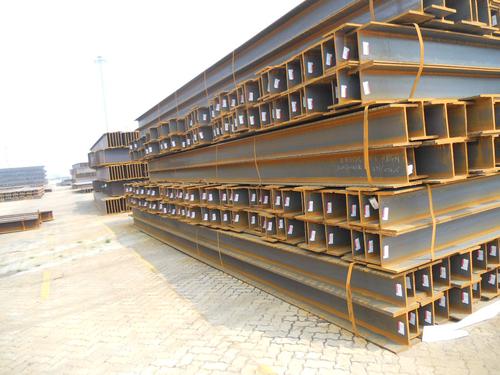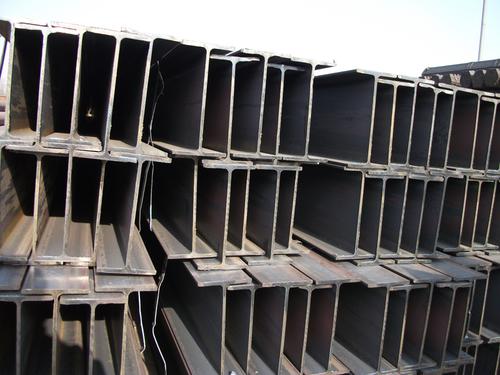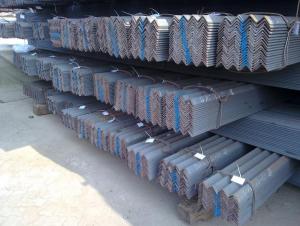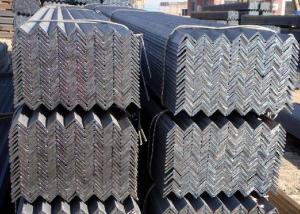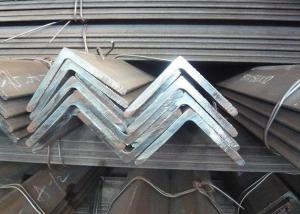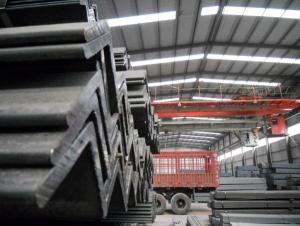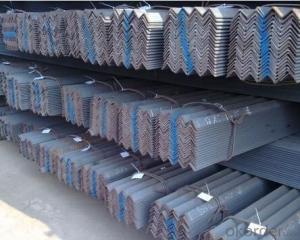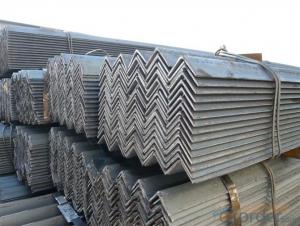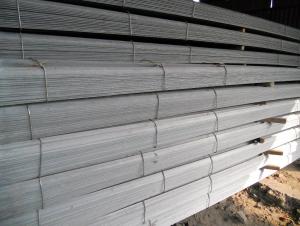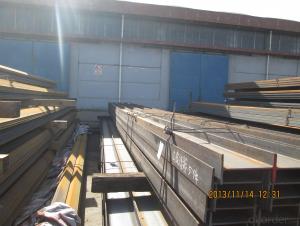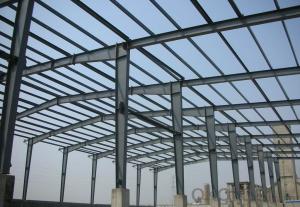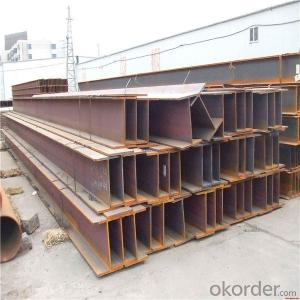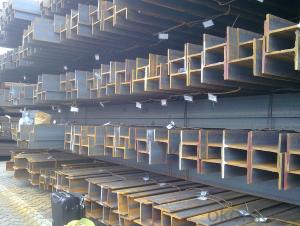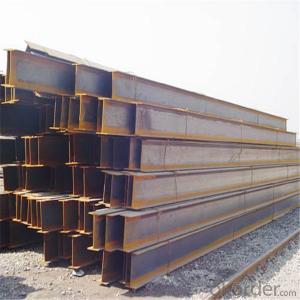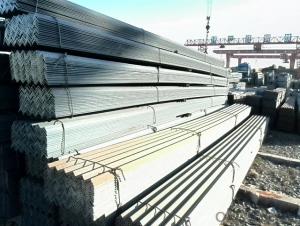Standard Size High Quality Steel H Beams from China
- Loading Port:
- China main port
- Payment Terms:
- TT or LC
- Min Order Qty:
- 50 m.t.
- Supply Capability:
- 100000 m.t./month
OKorder Service Pledge
OKorder Financial Service
You Might Also Like
Product Description:
Specifications of Standard Size High Quality Steel H Beams from China
1. Standard: GB700-88, Q235B2.
2. Grade: Q235, SS400 or Equivalent
3. Length: 6m,10m, 12m as following table
4. Invoicing on theoretical weight or actual weight as customer request
5.Payment: TT or L/C
Different Sizes of Standard Size High Quality Steel H Beams from China
SIZE(mm) | DIMENSION(kg/m) |
100*100 | 16.9 |
125*125 | 23.6 |
150*75 | 14 |
150*150 | 31.1 |
148*100 | 20.7 |
198*99 | 17.8 |
200*100 | 20.9 |
248*124 | 25.1 |
250*125 | 29 |
Usage & Applications of Standard Size High Quality Steel H Beams from China
Commercial building structure ;Pre-engineered buildings; Machinery support structure; Prefabricated structure; Medium scale bridges; Ship-building structure. etc.
Packaging & Delivery of Standard Size High Quality Steel H Beams from China
1. Packing: it is nude packed in bundles by steel wire rod
2. Bundle weight: not more than 3.5MT for bulk vessel; less than 3 MT for container load
3. Marks:
Color marking: There will be color marking on both end of the bundle for the cargo delivered by bulk vessel. That makes it easily to distinguish at the destination port.
Tag mark: there will be tag mark tied up on the bundles. The information usually including supplier logo and name, product name, made in China, shipping marks and other information request by the customer.
If loading by container the marking is not needed, but we will prepare it as customer request.
4. Transportation: the goods are delivered by truck from mill to loading port, the maximum quantity can be loaded is around 40MTs by each truck. If the order quantity cannot reach the full truck loaded, the transportation cost per ton will be little higher than full load.
5. Delivered by container or bulk vessel
Production flow of Standard Size High Quality Steel H Beams from China
Material prepare (billet) —heat up—rough rolling—precision rolling—cooling—packing—storage and transportation
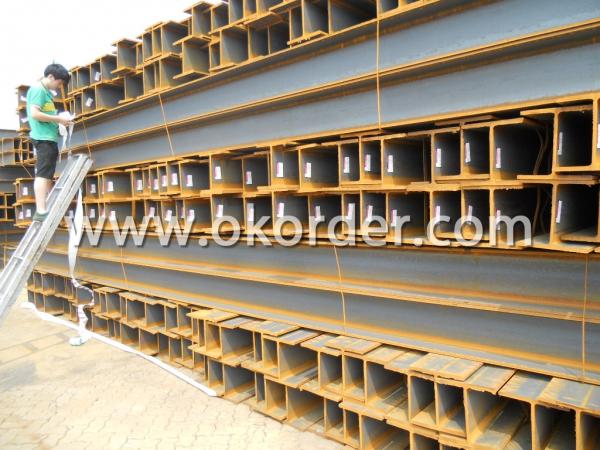
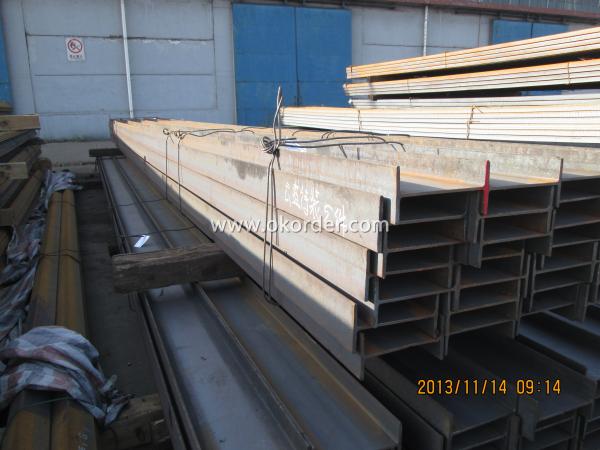
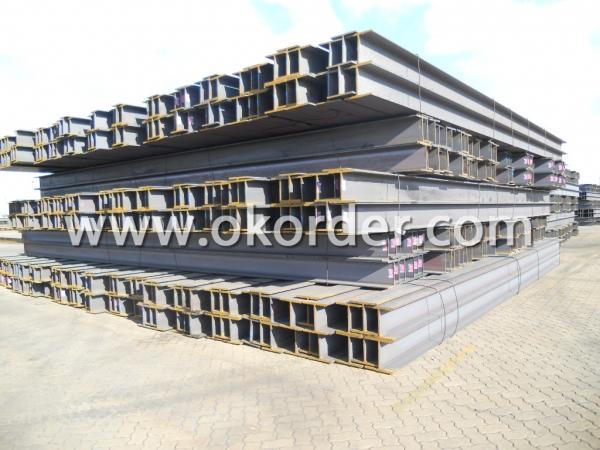
- Q: Can steel angles be used in the construction of parking garages?
- Steel angles can indeed be utilized in the construction of parking garages. These angles are frequently employed in construction due to their robustness, durability, and versatility. They have a wide range of structural applications, including the building of parking garages. Steel angles offer support and reinforcement for crucial elements like beams and columns, as well as for framing and bracing. They play a significant role in establishing the framework for parking garage floors and walls, contributing stability and strength to the structure. Moreover, steel angles can be easily fabricated and tailored to meet the precise design and engineering specifications of a parking garage. All in all, steel angles are a favored choice for constructing parking garages because they can endure heavy loads, resist corrosion, and deliver enduring performance.
- Q: Angle iron specifications 125 * 80 * 101 m multiple
- The angle iron can be made up of different force components according to the different structure, and can also be used as the connecting piece between the components. Widely used in a variety of architectural and engineering structures, such as beams, bridges, towers, hoisting and conveying machinery, ships, industrial furnace, reaction tower, container frame, cable bracket, power piping, busbar support installation, and warehouse shelves.
- Q: Can steel angles be used for conveyor supports?
- Yes, steel angles can be used for conveyor supports as they provide stability and strength due to their structural design.
- Q: What is the maximum spacing for steel angles in a support structure?
- The maximum spacing for steel angles in a support structure depends on various factors such as the load requirements, material strength, and design specifications. However, it is generally recommended to consult with a structural engineer or refer to relevant building codes and standards to determine the appropriate maximum spacing for steel angles in a specific support structure.
- Q: What are the different types of connections used for steel angles in educational institutions?
- There are several types of connections commonly used for steel angles in educational institutions. These include bolted connections, welded connections, and clip angles. Bolted connections involve using bolts and nuts to secure the steel angles together. Welded connections, on the other hand, involve fusing the steel angles together using heat. Clip angles are small pieces of steel that are used to connect and reinforce the steel angles. Each type of connection has its own advantages and disadvantages, and the choice depends on factors such as the load requirements, cost, and construction method.
- Q: How do you store and transport steel angles?
- To store and transport steel angles, it is important to follow certain guidelines to ensure their safety and prevent any damage. Here are some steps to consider: 1. Select appropriate storage location: Find a well-ventilated area that is dry, clean, and free from any moisture or chemicals that could cause corrosion. Ideally, the storage area should be indoors to protect the steel angles from the elements. 2. Organize and stack properly: Prioritize organizing the steel angles based on their size, shape, and weight. Stack them horizontally, one on top of the other, ensuring that heavier angles are placed at the bottom to avoid deformation or damage to lighter ones. Use wooden or rubber spacers between layers to prevent direct contact and minimize the risk of scratches or other surface imperfections. 3. Secure the stack: Use sturdy metal bands, straps, or chains to secure the stack of steel angles, ensuring they are tightly bound together. This will prevent any movement during transportation and reduce the risk of accidents or damage. 4. Use appropriate lifting equipment: When handling steel angles, it is crucial to use suitable lifting equipment such as cranes, forklifts, or hoists. Ensure that the equipment has the required capacity to lift the angles safely, and make sure the lifting points are evenly distributed to avoid any bending or distortion. 5. Protect against corrosion: Apply a corrosion-resistant coating or protective oil film to the steel angles before storage and transport. This will help prevent rusting and other forms of corrosion caused by exposure to moisture or environmental factors. 6. Secure packaging during transport: If the steel angles need to be transported over long distances, consider using suitable packaging materials like wooden crates or steel pallets to provide additional protection. Securely fasten the angles to the packaging to prevent any movement or shifting during transit. 7. Regular inspection: Regularly inspect the stored and transported steel angles for any signs of corrosion, damage, or deformation. If any issues are identified, take immediate action to prevent further deterioration. By following these guidelines, you can ensure the safe storage and transportation of steel angles, minimizing the risk of damage and maintaining their quality.
- Q: What is the maximum bending moment for a steel angle?
- The maximum bending moment for a steel angle depends on various factors such as the dimensions, material properties, and loading conditions. It cannot be determined without specific information about the angle and the forces acting on it.
- Q: What are the common methods of surface preparation for steel angles?
- The common methods of surface preparation for steel angles include grinding, sandblasting, and chemical cleaning. Grinding is a mechanical method where the surface of the steel angle is smoothed and leveled using an abrasive wheel or disc. This method is effective in removing rust, scale, and other surface imperfections. It is commonly used for small-scale projects or when a smooth surface finish is not critical. Sandblasting, also known as abrasive blasting, involves propelling small particles at high speeds onto the surface of the steel angle. This method is highly effective in removing mill scale, rust, paint, and other contaminants. Sandblasting provides a roughened surface that promotes better adhesion of coatings or paints. It is commonly used in large-scale industrial projects where a high-quality surface finish is required. Chemical cleaning involves using chemical solutions to remove contaminants from the surface of the steel angle. This method is effective in removing rust, oil, grease, and other organic materials. Chemical cleaning can be done through various techniques such as immersion or brush application. It is commonly used when sandblasting or grinding may not be feasible or practical. In addition to these methods, other surface preparation techniques may include power tool cleaning, flame cleaning, or a combination of methods depending on the specific requirements of the project. It is important to choose the appropriate method based on the condition of the steel angle, the desired surface finish, and the intended application of the steel angle.
- Q: What is the maximum deflection allowed for steel angles?
- The maximum deflection allowed for steel angles depends on several factors such as the specific application, the load applied, and the design standards being followed. Generally, the maximum deflection for steel angles is determined by considering the acceptable level of aesthetic appearance and structural performance. Consulting the relevant design codes or consulting with a structural engineer would provide more specific information on the maximum allowable deflection for steel angles in a given situation.
- Q: What is the standard size of steel angles?
- Steel angles come in a range of sizes that vary depending on the region and industry standards. Generally, they are available in equal and unequal leg lengths, with the equal leg angles typically sized between 20mm and 200mm. The thickness of the angle can also vary, typically falling between 3mm and 20mm. However, it is crucial to understand that these measurements may differ based on the specific application or project requirements. To determine the correct size of steel angles for a particular project, it is recommended to consult industry standards or manufacturers.
Send your message to us
Standard Size High Quality Steel H Beams from China
- Loading Port:
- China main port
- Payment Terms:
- TT or LC
- Min Order Qty:
- 50 m.t.
- Supply Capability:
- 100000 m.t./month
OKorder Service Pledge
OKorder Financial Service
Similar products
Hot products
Hot Searches
Related keywords
